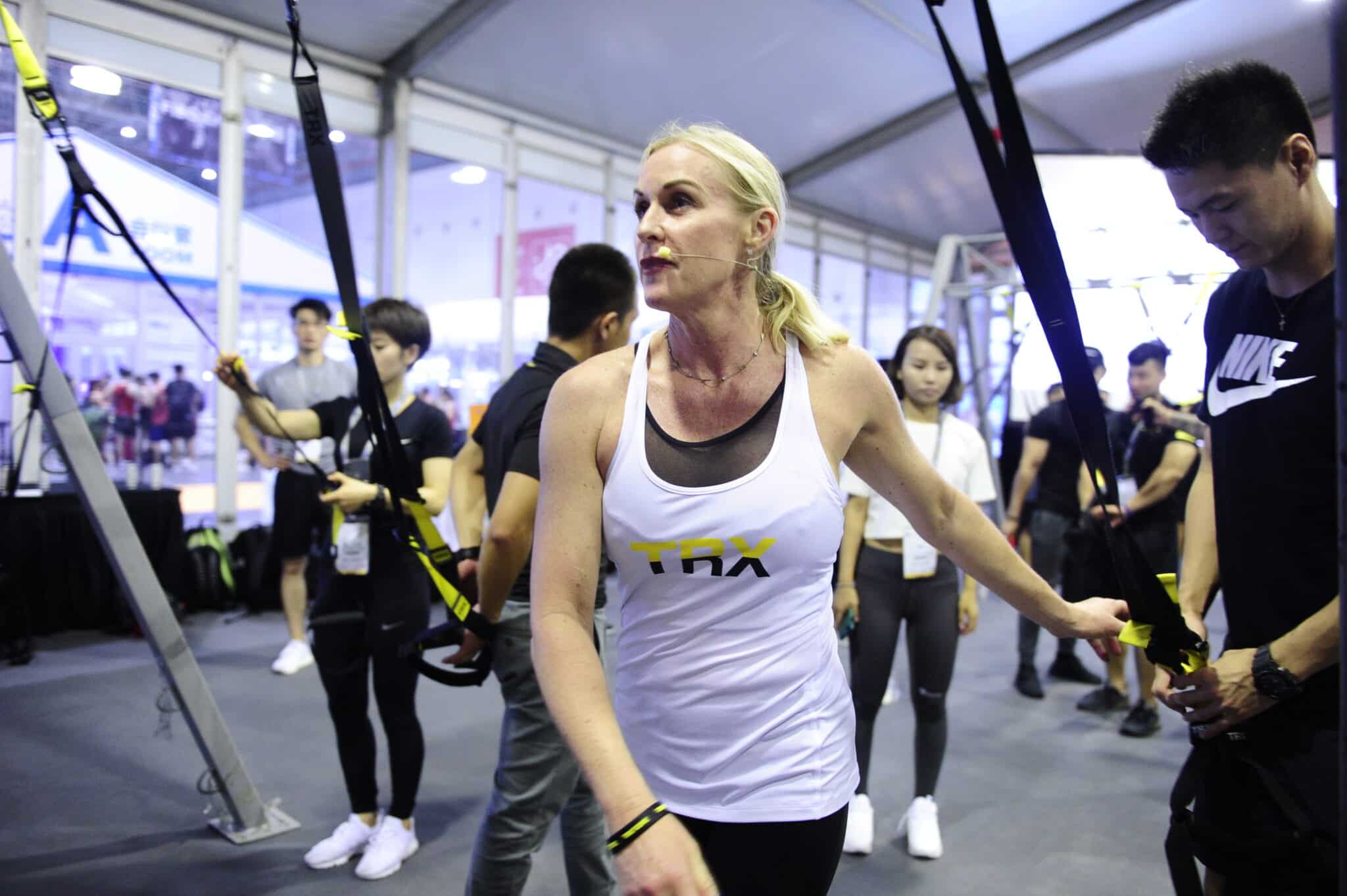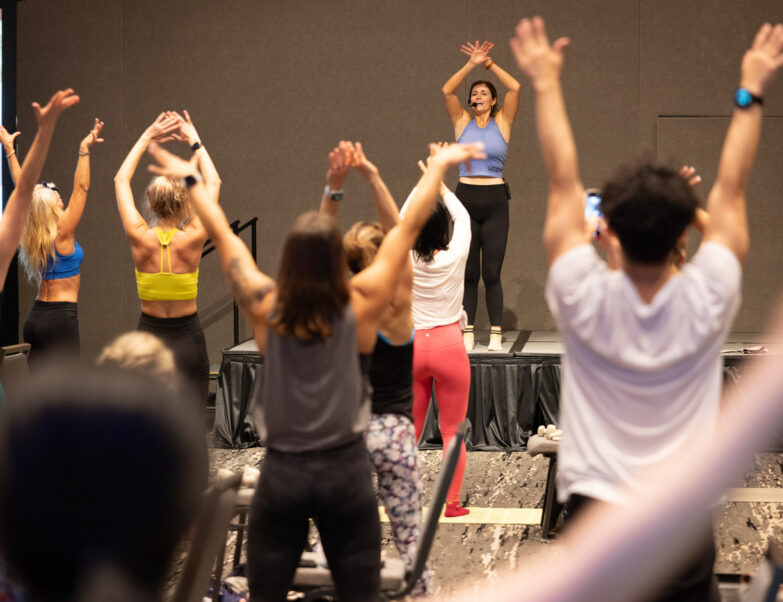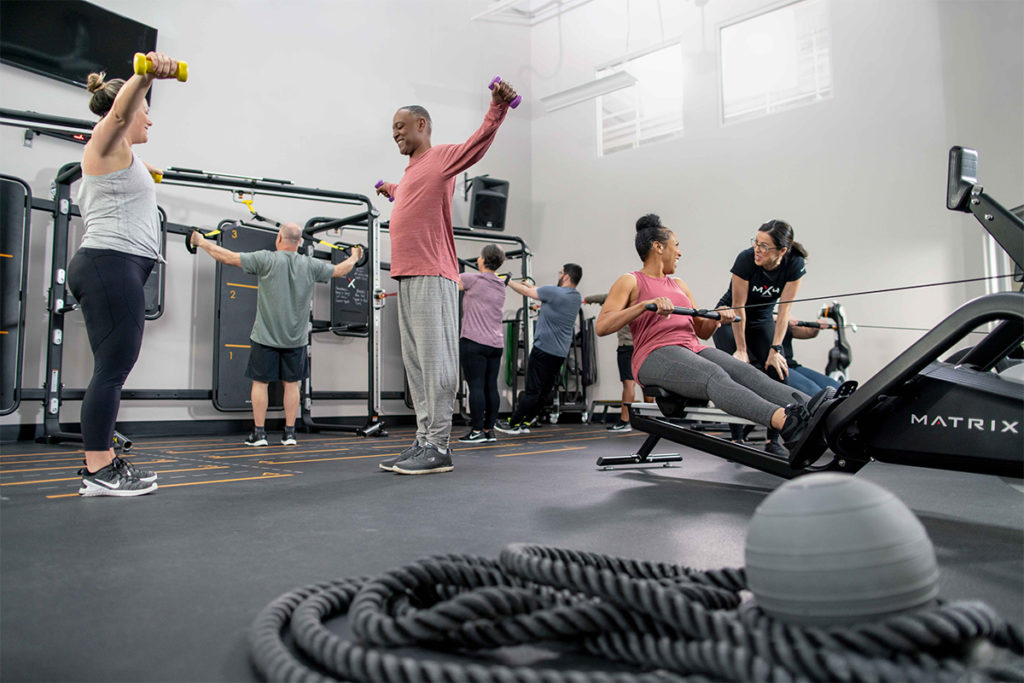Make the Mind-Body Connection
Introduce yoga- and Pilates-based movements to your group fitness class.
How many of you took group fitness classes in the 1980s? Do you remember exercises that mimicked the “downward dog” and “plough” poses? During those years, many fitness instructors—specifically those who taught aerobics when
it was associated with veterans Jacki Sorensen and Jane Fonda—used yoga- and Pilates-based movements in their classes without knowing it.
Today, the mind-body movement continues to grow in popularity. And group fitness instructors are in a prime position to borrow and adapt moves for interested participants, who may feel too intimidated to attend classes dedicated completely to mind-body disciplines.
You can easily add challenging, user-friendly and practical yoga- and Pilates-based moves to your existing classes. Whether you include them in the cool-down of a step class or in the muscle-conditioning section of a high-low class, mind-body moves offer participants the core strength training and flexibility benefits they need to stimulate their workouts.
A Gentle Transition
Teaching mind-body exercises requires special training, but you don’t need to be an expert to introduce a few modified moves. You do, however, need to get participants on your side if you want them to embrace the new style. Many participants attend cardio classes because they want to “feel” like they
are working out. They reject yoga or Pilates because they perceive it is too easy and are surprised to discover that many moves are quite challenging.
On the other hand, too much stillness or breathing (the “mind” aspect) may make people feel uncomfortable. It
is difficult to challenge the mind-set
of participants who are overly focused
on how they look, rather than on
how they function.
Be aware that you need a subtle transition when introducing these moves to a “traditional” exercise class. The “more is better” attitude has no place in a mind-body setting. Tell students it’s not about how fast they can go or how many repetitions they can do; it’s about making the most of the movements themselves. These exercises require the ability to coordinate sensory and spatial awareness with postural focus, agility, strength and flexibility. Participants must be patient
and relax as they explore the mind-body connection.
Create Right Expectations
Many of the new patterns will feel “mildly uncomfortable.” This is
normal. The discomfort is due to the
unfamiliar stimulus the exercises
present. This should not be confused with a “painful workout experience,” which indicates one of two things: Either the exercises are inappropriate for the participant because of a preexisting medical condition, or the
participant is performing the moves
incorrectly.
Alter your language when preparing students for these new exercises. Don’t say, “Let’s cool down and work our abs.” Do say, “Let’s practice some yoga postures and then do core-conditioning exercises for our abs.” Vary your cues and change the traditional reminders. Don’t say, “Drop your shoulders and pull in your abs.” Do say, “Release
your stress and lead with your heart.”
Safe and Effective Teaching
Safety is a priority when teaching yoga- and Pilates-based movements, especially when participants are unfamiliar with the format. A good rule of thumb is to use common sense and monitor participants’ body language to assess their skill levels.
Experienced mind-body instructors understand and can communicate how mind-body interaction, breathing and muscle relaxation techniques interrelate. An effective instructor has a good eye for posture and alignment and can teach proper breathing in a matter of minutes. Instruction time is often limited, so exercises need to be succinctly cued and easily modifiable. A good practical focus emphasizes anatomy,
kinesiology and biomechanics, along with cuing and exercise modifications common to a group exercise setting.
Mind-body techniques are new to many fitness participants, and learning new moves can be daunting. However, participants soon learn that select exercises adapted from yoga and Pilates can enhance their fitness. By opening the door to this new world, instructors can help redefine what it means to be fit.
- Don’t overwhelm participants with too much stillness or too many breathing techniques in the beginning.
- Vary cues and change traditional reminders to encourage mind-body awareness and movement modifications when necessary.
- Remind participants that moves are progress-oriented and skill levels will improve with practice.
- Multiple repetitions are not appropriate for beginners. Go slowly and stay low in reps until you establish a good baseline of strength with corresponding biomechanics.
Most of the exercises presented here require nothing more than the person’s own body weight and a mat. However, stability balls, yoga straps, core boards and resistance tubing offer additional support and variety. These examples have been modified for group fitness participants who are new to yoga and Pilates.
Mountain Pose
Benefit: Improves posture.
Stand tall with feet slightly narrower than hip width apart. Hands hang freely at sides, and palms are turned in toward thighs. Anchor feet into the ground. Visualize a string at the top of your head, pulling you toward the sky. Spine is aligned; chest and shoulders are open. Weight is centered on feet, with arches lifted. Test for proper foot placement by lifting and spreading toes and placing them down again. Breathe deeply and release tension by focusing inward.
Modification: Slightly flex the knees.
Warrior Pose
Benefit: Strengthens and stretches legs and ankles; increases stamina.
Place right foot on step, left foot on floor. Feet are in an imaginary line that goes from heel of right foot to arch of left foot. Left leg is straight; right knee is bent. Do not let knee extend past toes or let rear hip rotate forward. Extend arms to sides. Engage scapulae and open chest. Repeat on other side.
Modification: Decrease stance width, lunge depth and arm height.
Downward Dog
Benefit: Strengthens upper body; stretches hamstrings.
Place hands on step, with fingers spread wide apart. Press weight into hands and balls of feet, with more weight in feet. Lower heels as flexibility and increased core body temperature allow, but do not force them into the floor. Release tension in neck and jaw, aligning ears between biceps. Lift hips upward, flexing from hips, not waist.
Modification: Bend knees if hamstrings are tight.
Standing Forward Bend
Benefit: Strengthens ankles and thighs; stretches chest and shoulders.
Start in mountain pose. Inhaling, lift arms overhead. Exhaling, bend forward from hips. (Cue: “Flex from the place where your legs attach to your torso, not where your belt crosses your pants.”) Lengthen lumbar spine, rather than bending into it. Keep weight in feet, and anchor them. Allow head to fall, looking through legs at wall behind you. There should be no discomfort in lower back.
Modification: Bend knees if hamstrings are tight.
Pyramid Pose
Benefit: Stretches hamstrings and improves balance.
Stand with one foot on floor and other on a step, about 3 feet apart. Keep both knees straight. Flex forward from hips and allow body weight to drop over front leg. Pull kneecaps up toward hips. Lift up and out of hips to lengthen over front leg. Repeat on other side.
Modification: Slightly bend the front leg.
Plank
Benefit: Strengthens wrists, shoulders, abdominals, lower back and thighs.
Start on hands and knees, with hands shoulder distance apart, and knees and feet hip width apart. Draw shoulders down and in. Extend hips and knees, placing lower-body weight in toes and in balls of feet and upper-body weight in hands and wrists. Spread fingers wide. Make sure hips are slightly lower than shoulders. Press into palms and straighten arms. Tuck tailbone under so legs, hips and torso are in one straight line. Hold for 10 seconds.
Modification: Bend both knees to the floor.
Hover
Benefit: Strengthens shoulders, abdominals, lower back and thighs.
From prone position, place forearms on floor, elbows shoulder distance apart, scapulae drawn down and in. Push back into plank position. Slowly lower knees to floor without compromising the engaged core or upper-body integrity. Gradually build up to 10 repetitions.
Modification: To release lower back, press back into child’s pose. (With knees hip width apart, exhale and sit back with buttocks on heels, torso resting on thighs. Extend arms in front, palms down.)
Side Lift
Benefit: Strengthens abdominals and lower back.
In a lateral position, hold torso between elbow and anterior ankle with feet stacked. Place elbow in line under stabilized shoulder. Support body by placing free hand slightly in front of torso. As if a rope were tied to your waist, lift straight up toward ceiling, pulling navel back into spine. Gradually build up to 10 repetitions.
Modification (shown): Cross feet; hold top leg in abduction while performing the move.
Irene McCormick, MS
"Irene McCormick, MS, is the 2018 IDEA Instructor of the Year and the senior director of fitness education for Orangetheory Fitness® in Boca Raton, Florida. Former adjunct faculty at Drake University, Irene is a master course instructor for TRX®, a lead conference educator for WaterRower®, a Savvier Fitness master trainer, a Ryka® brand ambassador and an award-winning conference educator. She has also written two books, and is a subject matter expert for ACE, NASM, Human Kinetics and Orangetheory."






